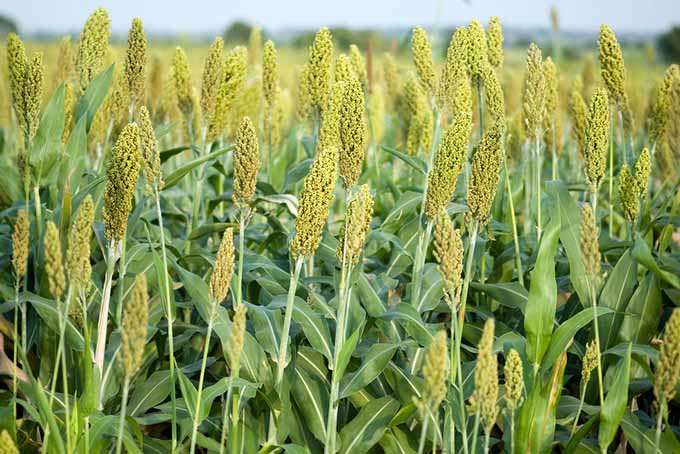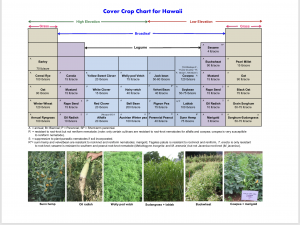If your school is worried about keeping up with a garden during the summer, and can’t host regular community activities, consider cover cropping or producing green manure. Cover crops are crops grown to improve soil fertility and benefit future plants while beds are ‘put to rest.’ Green manures are specific cover crops that are turned into the soil after growing to further benefit the soil. Cover cropping can have huge benefits for soil improvement and plant health, as well as suppressing weeds— all of which make cover cropping a useful activity to prep a garden for another year of production.
Type of Cover Crops
Usually cover crops are planted in Fall and Winter in more temperate climates when production has slowed. In Hawai‘i, when every season has potential for growth, cover cropping can still offer benefits to give your bed a ‘break’ and add some much-needed nutrients to the soil. Think about the characteristics of your garden. Most school gardens on Hawai‘i will have similar characteristics:
- 8-10 weeks time frame of little to no maintenance
- For raised beds, mowing is not an option
- Little Rainfall, Sunny Conditions
- Easy removal needed
With these characteristics in mind, Emilie Kirk with CTAHR recommends a cover crop mixture that includes:
- A crop that is fast growing for initial cover (ex. buckwheat or annual ryegrass)
- A legume for Nitrogen fixation (ex. Sunn hemp)
- Other species to reduce soil pest pressure (ex. Sorghum-sudangrass hybrids)
- A tiller or oil radish to reduce compaction for larger garden plots
Kirk adds, “For school gardens, I would stick with annuals for ease of maintenance,” usually requiring a volunteer or teacher to cut back the crop once or twice during the summer so it’s more manageable when school starts.
Method
Below is a process to planting, maintaining and harvesting cover crops.
Planting
- Remove all crop residue, including roots, and level the bed out.
- Evenly spread seeds.
- Cover seeds with an inch of soil, and compact soil by pressing down on a shovel of piece of wood.
- Optional: Spread grass clippings or straws over bed to ward away birds and chickens.
- Water often during germination period.
Maintaining
- Schedule a cutting at least once or twice during the summer to make sure the cover crops don’t get too fibrous.
- Keep an eye out for the cover crop going to seed!
Harvesting
- Make sure to cut back crops BEFORE they go to seed to help prevent it from becoming a new weed problem in the Fall, and to help ensure more nitrogen is fixed in the soil instead of being translocated to seeds.
- If the cover crops are small (about a foot tall or smaller) they can be tilled into the soil. Best to do three-four weeks before the start of school.
- If the crops are bigger than a foot tall, you can use the crops as mulch (chop and drop method) or add them to your compost.
- You can always keep your cover crops growing and use them for their intended purposes (grains, herbs, etc) for processing or crafts.
Questions? Comments? Leave a comment below or visit our Kaua‘i School Garden Network page, here!


